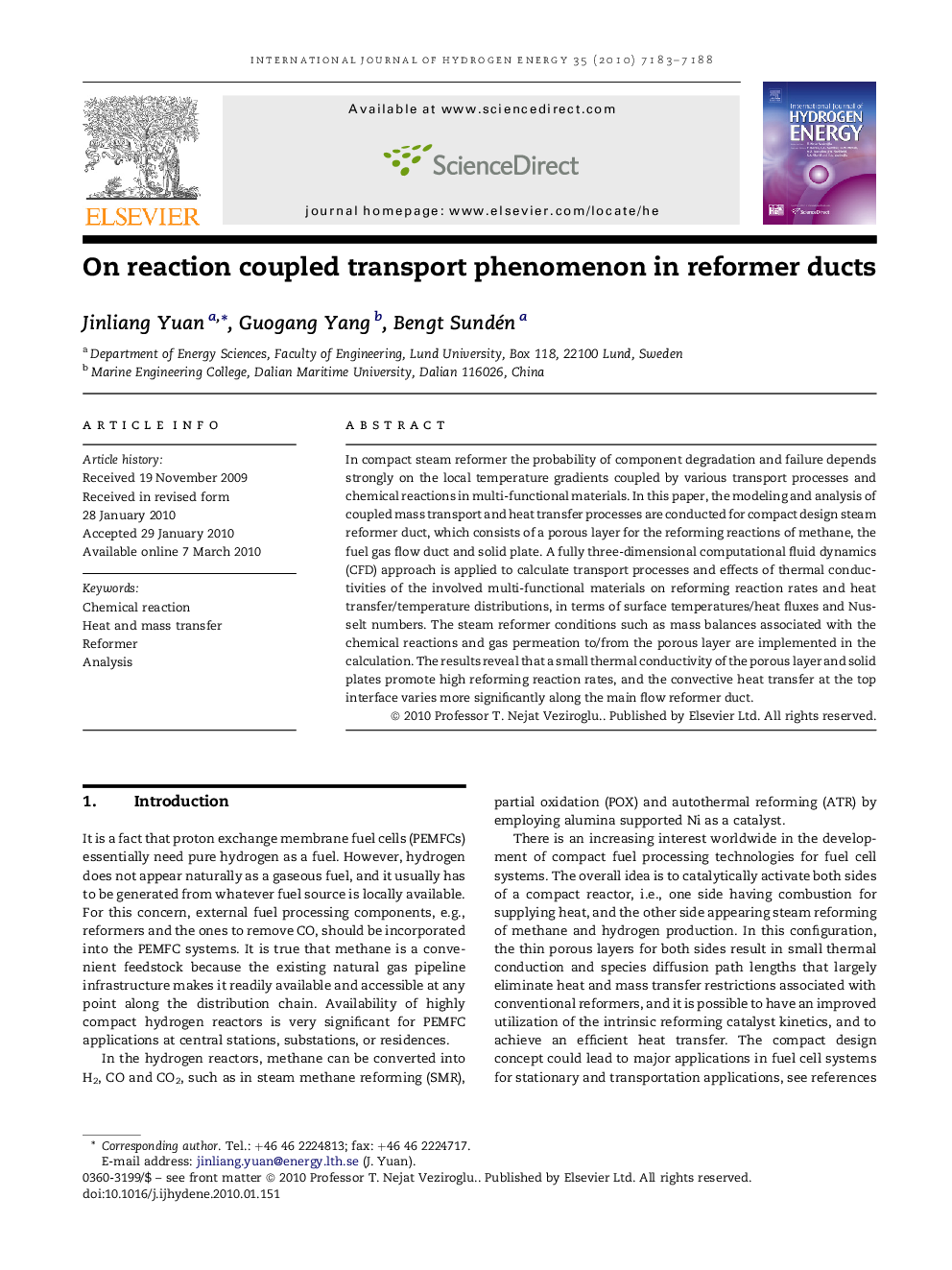| Article ID | Journal | Published Year | Pages | File Type |
|---|---|---|---|---|
| 1272964 | International Journal of Hydrogen Energy | 2010 | 6 Pages |
In compact steam reformer the probability of component degradation and failure depends strongly on the local temperature gradients coupled by various transport processes and chemical reactions in multi-functional materials. In this paper, the modeling and analysis of coupled mass transport and heat transfer processes are conducted for compact design steam reformer duct, which consists of a porous layer for the reforming reactions of methane, the fuel gas flow duct and solid plate. A fully three-dimensional computational fluid dynamics (CFD) approach is applied to calculate transport processes and effects of thermal conductivities of the involved multi-functional materials on reforming reaction rates and heat transfer/temperature distributions, in terms of surface temperatures/heat fluxes and Nusselt numbers. The steam reformer conditions such as mass balances associated with the chemical reactions and gas permeation to/from the porous layer are implemented in the calculation. The results reveal that a small thermal conductivity of the porous layer and solid plates promote high reforming reaction rates, and the convective heat transfer at the top interface varies more significantly along the main flow reformer duct.
